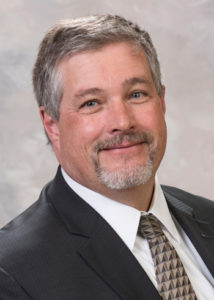Owned and operated by The Sisters of the Third Order of St. Francis, Peoria, Illinois, OSF Healthcare System consists of 11 acute care facilities, comprising 1,553 beds; one long-term care facility; and two colleges of nursing, located in Peoria and Rockford, Illinois. OSF HealthCare also has a physician organization – OSF Medical Group.
 John Horne
John Horne
Senior vice president, chief supply chain officer, OSF HealthCare, Peoria, Illinois
To align the care delivery system more closely with physicians, OSF HealthCare developed clinical service lines in cardiac services, neurosciences and pediatrics. OSF employs 738 providers in more than 100 locations; owns an extensive network of home health services known as OSF Home Care Services; owns OSF Saint Francis, Inc., comprised of healthcare-related businesses; and OSF Healthcare Foundation, the philanthropic arm for OSF HealthCare System and OSF Home Care Services. OSF has a state of the art innovation and simulation center at Saint Francis Medical Center, in collaboration with Illinois College of Medicine at Peoria.
John Horne has been in healthcare supply chain since 1987, and has served as chief supply chain officer at OSF for four years. For 11 years prior to joining OSF, he was corporate director materials management for Health Management Associates, a for-profit company that operated 71 hospitals in 16 states before being acquired in 2013 by Community Health Systems.
At OSF, Horne coordinates oversight and management for over $350 million annual supply and pharmacy expense, and over $150 million in purchased services. He oversees the OSF Sponsored Affiliate Program, comprised of over 40 non-owned affiliate hospitals and other providers, representing approximately $110 million in annual supply expense. Supply Chain has consolidated purchasing and contract management for the organization, and its service line comprises 38 ministry-based mission partners (employees), and approximately 210 field-based mission partners.
Journal of Healthcare Contracting: What has been the most challenging and/or rewarding supply-chain-related project in which you have been involved in the past 12-18 months?
John Horne: In 2016 we began due diligence on a GPO change as part of our overall service line Functional Transformation, that is, a program intended to transform OSF from a (decentralized) holding company to a (centralized) operating company. We commenced a full RFI and RFP process, and awarded a contract to Premier. Over the past 18 months, OSF has implemented cost savings of over $30 million with support from Premier. In order to create a highly compliant commodity contract portfolio across the Ministry, we have built strong nursing and physician collaborations, and have streamlined the product selection, communication and conversion processes.
JHC: Please describe a project on which you look forward to working on in the next year.
Horne: OSF Supply Chain is leading development of consolidated distribution of med/surg and pharmacy, with projected commencement of operations beginning in 2019. We recently acquired a building in Peoria, Illinois, which contains 270,000 square feet of finished warehouse space and approximately 70,000 square feet of office space. Our intent is to create a self-distributed, LUM model to provide supplies and drugs to all of our hospitals, physician practices, home care patients, and other entities, with a view to supplying OSF Affiliates in a couple of years. Along with traditional distribution, we are contemplating consolidated oversight and delivery of other services, such as SPD, cook-chill, equipment management and repair, and ERP procure-to-pay outsourcing and management.
JHC: How have you improved the way you approach your job or profession in the last 5-10 years?
Horne: My greatest lesson learned during my tenure at OSF Healthcare has been to understand the need to find ways to collaborate with physicians, nursing and clinicians. We must allow physicians and clinicians to select the products and devices that are optimal for patient care; then and only then can we drive high contract compliance and improved costs.
We have created a simple swim-lane approach to product and device selection to help drive a more efficient contract conversion process. Swim-lane 1 items are highly commoditized goods, which require least review and adoption in order to change. Swim-lane 2 items are more complex, requiring more analysis and review. Swim-lane 3 devices are either highly physician-preference, or are tied to specific equipment or department use – e.g., lab analyzers and reagents. Lane 3 products require a more thorough, multidisciplinary review and conversion process.
JHC: What do you need/want to do to become a better supply chain executive in the coming year(s)?
Horne: I must find ways to improve interaction and partnership with our suppliers and manufacturers. Suppliers and providers must learn to trust one another, more readily exchange data, and work together to drive more efficiency through the supply chain. I believe we have lessons to learn from retail distribution (e.g,, Wal-Mart, Amazon, etc.) to remove added costs.
